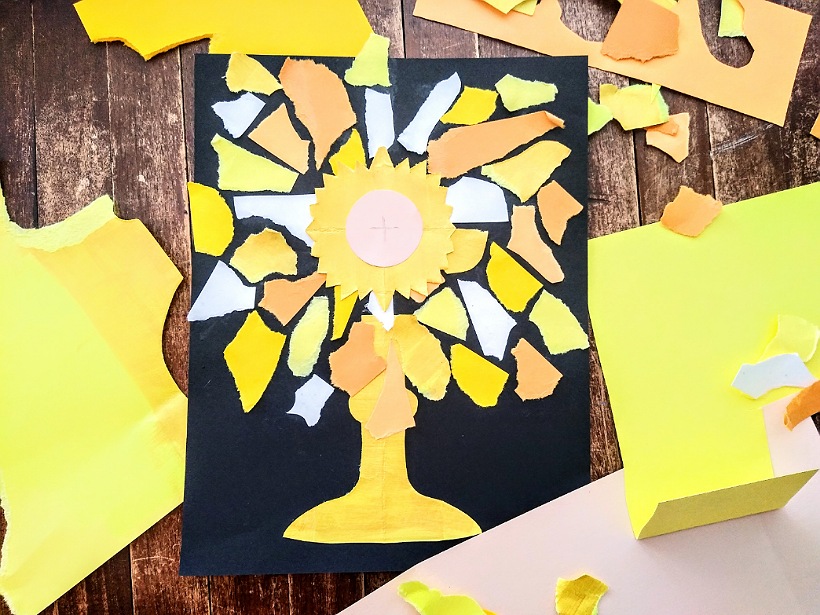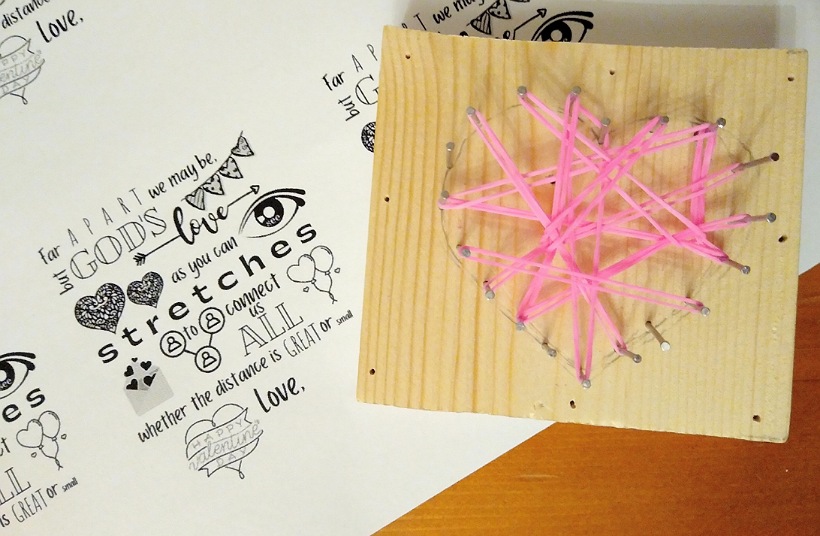“To pray . . . is to so open the center of yourself to God that you are filled with his presence, enveloped by his light, and made whole by his truth.” said Blessed William Joseph Chaminade. Later, he added, “You must realize that God is always ready to welcome you, to listen to you, and to gift you with himself. In honesty, however, you must admit that you are not always ready to do the same and are in need of God’s help even to prepare yourself to encounter him.”
This beautiful quote from the founder of the Marianists helps us answer our first question:
What is prayer?
As we teach our kids the responses at Mass and help them learn the Our Father, Hail Mary, and Glory Be, we can sometimes lose sight of what prayer truly calls us to. Prayer is a conversation with our loving God, initiated by Him. It is a response to His invitation to know Him more, to understand His ways better, and to offer ourselves as collaborators in His great plan.
The Catechism (CCC) outlines five types of prayer – blessing and adoration, petition, intercession, thanksgiving, and praise. All of these begin not with lovely words or a perfect prayer space, or even quiet thoughts (even though we’ll outline the importance of this later). Prayer springs forth from humility.
Think of praying before a meal around your kitchen table. As you begin with, “Bless us, Oh Lord,” you are not simply repeating words or checking mealtime prayer off your to-do list. Saying those words allows you a brief moment to acknowledge God’s greatness in giving us the earth with its abundant nourishment. We think of the money it took to purchase the food and what job afforded us that money, or what God-given talents and experiences afforded us that paid work. Perhaps, we even contemplate the enormous number of people involved in the farming, harvesting, and distribution of the food on our plates that God put in the right place at the right time.
Humility admits a dependence on something greater than ourselves. Prayer voices that humility and seeks out that great power, either to ask for forgiveness or help, or to say thank you and convey awe. In forming a solid prayer life, then, you are truly forming a habit of humility.
How do we begin this conversation?
Prayer – real, humble, honest prayer – can feel awkward, especially in front of our kids, partly because it’s currently so taboo in our society to even believe in God, much less admit weakness and seek His love. Don’t let that stop you. Think of it as an unexpected chance to meet your greatest hero. It takes courage to walk up and say hello, but you wouldn’t want to miss it for the world. Below are a few tips and tricks our moms here at CraftyCatholicMoms have picked up along the way.

Don’t overthink it. During a call-in show with Fr. Mitch on EWTN, the priest explained that the first way Satan tries to stop us from doing good is by convincing us it’s too hard. If we knock down that hurdle, he’ll try to encourage us to go overboard instead so we burn ourselves out. Start small. Start family prayer time one night a week, one meal a day or even with a wave to Jesus in the Tabernacle as you pass by a Catholic Church in your car with your kids. Listen to a Catholic Sprouts Domestic Church Project podcast on your drive. Pick up the kids from school with the Divine Mercy Chaplet already playing. Do a decade of the rosary at snack time with an M&M for each prayer. Watch the Brother Francis DVD on prayer or see it on Formed.org. Way past that already? Bless your kids with holy water as they pray their own morning offering before school; choose a particular person to lift up each day; or add Adoration to the monthly – or even daily – family schedule.
Make space: At the heart of JPII’s Theology of the Body lies a reminder that we are not just spirit, but spirit and body. God gave us our particular body for a particular purpose. To follow His example, we should offer back to God both the tangible and the spiritual in our prayer lives. We can do this with our physical space by setting aside a corner, windowsill, or even a room just for prayer. If we can make space for a TV, we can make a place for prayer. We can also write it into our busy daily schedules. Clear time to spend with God in the same way you plan a lunch with a friend. Find resources for creating a prayer table at cgsusa.org, visit different churches and encourage your kids to imitate what they liked at home with drawings, paintings, statues, prayer cards, etc. Offering specific time and space helps our bodies know what’s going on in our hearts and minds. Ask a priest to bless the space or bring a few of the items from home and have them blessed. Peruse pictures of the world’s most beautiful churches for inspiration. Hop on over to blogs like CatholicAllYear to see how to beautify a space for a family chapel.

Make silence: In her day, Maria Montessori invented a game for the elementary children she served, whereby they would “make silence” by keeping themselves so still some wouldn’t even move to brush away a fly. In our current state of supreme distraction, this idea of making silence in order to have a deeper prayer life can seem daunting, especially if there’s an 18-month-old in your household. Start by seeking improvement, not perfection. Put nagging thoughts and ideas into mental boxes and hand them right to Jesus when He opens the door to your prayer. Take a minute to arrange yourself and your kids into comfortable, semi-sustainable positions and listen for some ordinary noise until everyone is quiet. If all else fails, go hide in a closet, clutching a prayer card, and tell your kids to do the same.

Participate, don’t lead: Even though as parents we are meant to be the first teachers of our children in the ways of the faith, our job description does not include prayer middleman. Invite your children to pray. Sit next to them instead of in front of them. Thank them for their words instead of repeating or summarizing them so they make more sense to you. Let God lead. Matthew Kelly writes in, “I Heard God Laugh,” that we need to have time with God without an agenda. When we sit down with an old friend, we don’t plan out our side of the conversation, and then their responses. We let the exchange flow naturally. Let God be in charge.

Recognize God in all things: Talk about your day-to-day in terms of the gifts God gave you throughout the day. Ask your kids how God was with them. Draw pictures of the blessings you received, write journal entries, or even make up fiction stories about what meant the most in the day.
Lift it up: When the baby wakes you up for the fifth or first time overnight, silently ask God to use your suffering to bless whoever needs some grace in that moment. Show your kids how to do the same in tough moments, like when they forget their lunch, can’t go to sleep, or have to be really courageous to do something they’re scared of. Think of someone specific who needs prayers, and ask your kids to find hope in doing the hard thing for the sake of that person.
References
Catechism of the Catholic Church
The Marianist Family Prayer Book
I Heard God Laugh, by Matthew Kelly
Daily Roman Missal, According to the Roman Missal, Third Edition
The Discovery of the Child, by Maria Montessori






